Combating Racism – 19th Century Black Female Authors – Part 1
The nineteenth century was a formative period in African-American literary and cultural history. Prior to the Civil War, the majority of Black Americans in the United States were held in bondage. Law and practice forbade teaching Blacks to read or write. Even after the war, many of the impediments to learning and literacy remained. Nevertheless, Black men and women of the nineteenth century learned to both read and write. Moreover, more African-Americans than we yet realize turned their observations, feelings, social viewpoints, and creative impulses into published works, including poetry, short stories, histories, narratives, novels, autobiographies, social criticism, and theology, as well as economic and philosophical treatises. Unfortunately, much of this body of literature remained, until very recently, relatively inaccessible to twentieth-century scholars, teachers, creative artists, and others interested in Black life. Prior to the late 1960s, most Americans (Black as well as White) had never heard of these nineteenth-century authors, much less read their works. For this week and the next two weeks I will examine some of the more significant, yet little known, Black female writers of the 19th century—women whose written records give light to their personal history and the history of our country.
OCTAVIA VICTORIA ROGERS ALBERT (1853 – 1890)
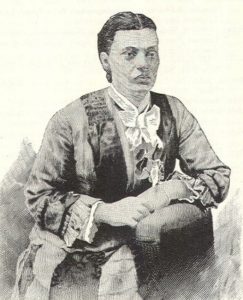
Octavia Victoria Rogers Albert was born into slavery in December, 1853 in Oglethorpe, Georgia. In 1870, Octavia enrolled in the Atlanta University. Three years later she began teaching in Montezuma, Georgia. There she met A.E.P. Albert and the two married in 1874. They had one daughter.
Octavia Albert always had a strong religious faith. In Oglethorpe, she attended the African Methodist Episcopal (AME) Church, which was under the ministry of former Congressman and prominent political activist Bishop Henry M. Turner. There she decided to devote her life to the church and her faith. In 1877, Octavia’s husband was ordained as a minister in the Methodist Episcopal Church. When he was ordained, she converted to Methodism and was baptized by him in 1888 after the family had moved to Houma, Louisiana. Because of her husband’s standing and for the first time in her adult life, Octavia Albert became a full-time housewife and mother.
In Houma, Albert was known as a community and religious leader. Often, members of the community gathered at her home to share stories of their lives as slaves. She drew inspiration from the stories of the former slaves and decided to collect them in the book The House of Bondage, which was published after her death by her husband and daughter in 1890. Albert, a skilled interviewer and writer, was able to convey on paper the powerful recollections of these former slaves. The House of Bondage was one of the first collections of the stories and memories of former enslaved people.
The interviews in her book, recorded over 15 years after the end of slavery, documented vivid accounts of harsh treatment towards Louisiana slaves and the negative effects on the livelihood of ex-slaves after their emancipation. The House of Bondage also recorded how some ex-slaves were able to progress after Emancipation and become part of society. Albert claimed her goal in writing The House of Bondage book was to tell the story of ex-slaves as well as to “correct and to create history.” Octavia Victoria Rogers Albert is thought to have died around 1890 in Houma, Louisiana.
VIRGINIA WALKER BROUGHTON (1856 – 1934)
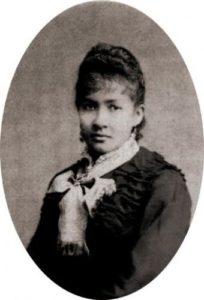
Born into an elite Black family in Nashville, Virginia Walker Broughton was one of four students in the first class at Fisk College in 1867. She began her professional career as a teacher and later became one of the most prominent domestic missionaries, as well as an accomplished speaker and writer. As a prominent member of the Baptist church and National Corresponding Secretary of the National Baptist Convention, she worked to ensure that the issues of African-American religious women were addressed by the governing body of the denomination. Broughton was licensed as a missionary and subsequently commissioned to the mission field. For more than half a century, Virginia Walker Broughton worked tirelessly to uplift Black communities, and especially Black women, throughout Tennessee.
The book for which Broughton is best known, Twenty Year’s Experience of a Missionary, is an autobiography first published in 1907 and reprinted in 1988 as part of a scholarly edition of spiritual narratives by Black women. Recently, in the archives of Fisk University, Broughton’s alma mater, Tomeiko Ashford Carter discovered an earlier autobiographical work, A Brief Sketch of the Life and Labors of Mrs. V. W. Broughton, Bible Band Missionary, for Middle and West Tennessee, which was distributed at the famous Atlanta Cotton States and International Exposition of 1895. While both autobiographies portray Broughton as an important religious figure for whom missionary work became a saving grace, Life and Labors is more revealing of key facts about Broughton and her family.
Among her other writings is a 1904 booklet titled Woman’s Work: As Gleaned from the Women of the Bible, and the Bible Women of Modern Times, which recognizes the prominence of the female in Christian theology and shows how Broughton anticipated the work of present-day feminist and women theologians. Broughton wrote articles for the National Baptist Union newspaper and National Baptist Magazine covering such topics as the Christian deportment of women and the need for Black spiritual literature. She devised a program for systematic Bible study and wrote a brief article, published just a few years before her death, in which she describes some of her missionary field work.
Virginia Broughton was strongly committed to making the work of Black religious women an ongoing intellectual enterprise. In her pages, she emerges as both a dedicated missionary and a formidable religious scholar.
ANNA JULIA HAYWOOD COOPER (1858 – 1964)
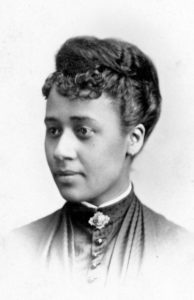
Anna Julia Haywood was born into slavery in 1858. Her paternity is unknown. She worked as a domestic servant in the home of George Washington Haywood. At age nine, two years after the end of the Civil War, she received a scholarship and attended Saint Augustine’s Normal School and Collegiate Institute in Raleigh, North Carolina. Founded by the local Episcopal diocese, the school trained former slaves to teach the formerly enslaved and their families. While at St. Augustine’s, Anna Cooper distinguished herself in both liberal arts and math and science, and fought for her right to take courses reserved for men.
In 1877, Anna married George A.G. Cooper, a teacher of theology at Saint Augustine’s. When her husband died in 1879, Cooper decided to pursue a college degree. She attended Oberlin College in Ohio on a tuition scholarship, where she continued to follow the course of study reserved for men. She earned a B.A. degree in 1884 and a Masters in Mathematics in 1887, making her one of the first two Black women to earn a Master’s degree. (Aletha Hebron Washington was the first Black American to earn a Master’s degree in 1925 from Ohio State University.)
Cooper’s first book, A Voice from the South: By a Black Woman of the South, was published in 1892. The book is widely viewed as one of the first articulations of Black feminism. The book advanced a vision of self-determination through education for Black women. Its central thesis was that the educational, moral, and spiritual progress of Black women would improve the general standing of the entire African-American community.
The book of essays gained national attention, and Cooper began lecturing across the country on topics such as education, civil rights, and the status of Black women. In 1902, Cooper began a controversial stint as principal of M Street High School (formerly Washington Colored High). The White Washington, D.C. school board disagreed with her educational approach for Black students, which focused on college preparation, and she resigned in 1906.
In addition to working to advance educational opportunities for Blacks, Cooper also established and co-founded several organizations to promote Black civil rights causes. She helped found the Colored Women’s League in 1892. Since the Young Women’s Christian Association (YWCA) and the Young Men’s Christian Association (YMCA) did not accept Black members, she created “colored” branches to provide support for young Black migrants moving from the South into Washington, D.C.
Cooper resumed graduate study in 1911 at Columbia University in New York City. After the death of her brother in 1915, however, she postponed pursuing her doctorate to raise his five children after the death of their mother. She returned to school in 1924 when she enrolled at the University of Paris in France. In 1925, at the age of 67, Cooper became the fourth Black woman to obtain a Doctorate of Philosophy.
In 1930, Cooper retired from teaching to assume the presidency of Frelinghuysen University, a school for Black adults that was later reorganized into the Frelinghuysen Group of Schools for Colored People. Cooper remained in that position until the school closed in the 1950s. Anna Julia Cooper died in 1964 in Washington, D.C. at the age of 105.
If you look inside your passport (the page number depends on the date of issue), you will find the following quotation by Anna Julia Cooper, the only woman quoted in the U.S. passport: “The cause of freedom is not the cause of a race or a sect, a party or a class—it is the cause of humankind, the very birthright of humanity.”
FANNY JACKSON COPPIN (1837 – 1913)
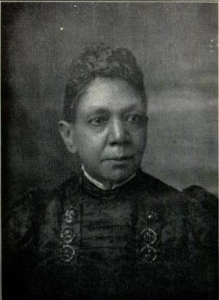
Born into slavery, Fannie Jackson’s freedom was purchased by her aunt at age 12. The inscription of her book reads, “This book is inscribed to my beloved aunt, Sarah Orr Clark, who, working at six dollars a month saved one hundred and twenty-five dollars, and bought my freedom.” Fannie Jackson spent the rest of her youth in New Bedford, Massachusetts working as a domestic servant for author George Henry Calvert, studying at every opportunity. After completing a teaching course, she enrolled at Oberlin College, the first college in America open to Blacks. Driven by a sense of mission to African Americans, while at Oberlin, Coppin established a special school with evening classes to teach freed slaves.
Oberlin appointed her as the first Black student to teach in its preparatory department. After graduating in 1865, she became principal of the Female Department of the Institute for Colored Youth (ICY) in Philadelphia, a Quaker institution. In 1869, while at the Institute for Colored Youth (the forerunner of Cheyney University of Pennsylvania), Coppin became the nation’s first Black woman to be appointed a school principal. Under her leadership, the institute specialized in educating Blacks as teachers and also added industrial training to its curriculum to teach vocational skills to both men and women. After establishing the Industrial Department, she set out to find work for the newly trained individuals. A few years later, she was promoted by the Philadelphia Board of Education to superintendent, becoming the nation’s first Black superintendent of a school district.
Fanny Coppin had a regular column in the Christian Recorder, the oldest Black periodical in the United States.
In December 1881, she married Levi Coppin, an African Methodist Episcopal (AME) minister and pastor of Bethel AME Church in Baltimore. She joined the AME Church and became active in mission work, serving for years as president of the AME Women’s Home and Foreign Missionary Society. In 1888 she represented the society at the London Centenary Conference and spoke on women’s desire for “the Christianization of the colored races of the earth.” In 1900 Levi Coppin was elected bishop for South Africa. Two years later, Fanny joined him and began speaking on temperance among African women. Because oppressed farm workers were partly paid in wine, temperance had special significance in the South African context.
Coppin’s autobiography, Reminiscences of School Life, and Hints on Teaching, was completed just before her death and published in Philadelphia in 1913.
In 1926, a school for teacher training was named Fanny Jackson Coppin Normal School in honor of Fanny Jackson’s contribution to teacher education. Now an HBCU (Historically Black Colleges and Universities), the school, located in Baltimore, was eventually named Coppin State University.
LUCY A. DELANY (1830 – 1891)
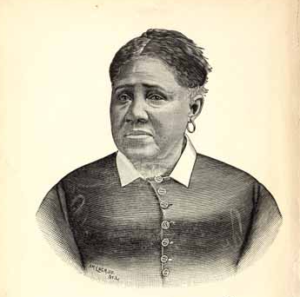
Lucy Ann Delaney, born Lucy Berry, was a former slave, an African-American author, and an activist.
Lucy’s mother, Polly Berry, had been born free in Illinois, but had been kidnapped as a child and sold as a slave to Major Taylor Berry of St. Louis. In October 1839 she sued for her own and her daughter’s freedom. Her suit was finally heard in 1843. For her daughter’s case, Berry attracted the support of Edward Bates, a prominent Whig politician and judge, and the future U.S. Attorney General under President Abraham Lincoln. He argued the case of Lucy Ann Berry in court and won in February 1844. Their cases were two of 301 freedom suits filed in St. Louis from 1814 to 1860.
In 1849, Lucy met and married Zachariah Delaney. They were married for the rest of their lives. The couple had four children. Two died in infancy; the surviving son and daughter both died in their early twenties.
Lucy Delaney became active in civic and religious associations. Such organizations developed rapidly in both the Black and White communities nationally in the years following the Civil War. She joined the African Methodist Episcopal (AME) Church in 1855, founded in 1816 in Philadelphia as the first independent Black denomination in the U.S. In addition, Delaney was elected president of the first colored society, the Female Union, an organization of Black women. She also served as president of the Daughters of Zion, as well as a women’s group affiliated with the Freemasons, to which her husband belonged. They often supported community education and health projects.
Delaney belonged to the Col. Shaw Woman’s Relief Corps, No. 34, a women’s auxiliary to the Col. Shaw Post, 343, Grand Army of the Republic (GAR). The veterans’ group was named after the White commanding officer of the 54th Massachusetts Infantry, the first of the United States Colored Troops and a unit that achieved renown for courage in the Civil War. Delaney dedicated her memoir to the GAR, which had fought for the freedom of slaves.
In 1891, Delaney published From the Darkness Cometh the Light, or, Struggles for Freedom, the only first-person account of a “freedom suit” and one of the few slave narratives published in the post-Emancipation period. Delaney devoted most of her account to her mother— Polly Berry’s— struggles to free her family from slavery. Though the story is Delaney’s, she features her mother as the lead protagonist.
The narrative is steeped in spirituality, as was typical of the genre and people’s lives. Delaney celebrated what she considered God’s benevolent role in her own life, and she attacked the hypocrisy of Christian slave owners. From the Darkness emphasizes the strength of the African Americans who suffered under slavery, rather than recount its abuses. By continuing her memoir after she gained freedom at age 14, Delaney could demonstrate her fortitude as a young widow.
After the rise of the mid-20th-century Civil Rights Movement and feminism, and new interest in historic Black and women’s literature, in 1988 her book was reprinted in the collection Six Women’s Slave Narratives by Oxford University Press. It is available in full for free online by Project Gutenberg, as well as by the University of North Carolina in its Documents of the American South website.
CHARLOTTE FORTEN GRIMKE (1837 – 1914)
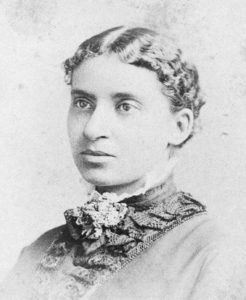
Charlotte Forten was born to free activist parents who were part of Philadelphia’s elite Black community. She was educated by private tutors as her father did not want her to attend a public school. Forten moved to Salem, Massachusetts where she joined the Salem Female Anti-Slavery Society.
In the 1850s Forten became increasingly involved in the abolitionist movement. She published several poems in anti-slavery publications such as The Liberator and The Evangelist. She also called for Black women’s participation in the abolitionist crusade. She joined circles of significant abolitionists such as William Lloyd Garrison and Lydia Maria Child. In 1856, she entered Salem Normal School to receive instruction in teaching.
In 1861, after Union troops occupied parts of the coastal Carolinas, federal authorities recruited Forten and others to teach emancipated Blacks on the Sea Islands of South Carolina. Her role in the community reached beyond education. She was one of the few northern Black teachers to chronicle her time on the islands. The Atlantic Monthly published her work, “Life on the Sea Islands,” in May and June of 1864.
At 41 years old, she married the Reverend Francis J. Grimké, a former slave and minister of D.C.’s Fifteenth Street Presbyterian Church. From 1881 to 1886, the couple resided in Dupont Circle, Washington, D.C.
In 1896, Forten helped found the National Association of Colored Women. Throughout the 1890s, she published poems about D.C., including “At the Home of Frederick Douglass” and “The Corcoran Art Gallery.” Forten remained active in the civil rights movement until her death on July 23, 1914.
CONCLUSION
Black women writers have helped bring the Black woman’s experience to life for millions of readers. They’ve written about what it was like to live in bondage, what Jim Crow America was like, and what 19th century American life has been for Black women. They have given words to the hidden parts of our history. Watch for next week’s newsletter with more unrecognized Black female authors.